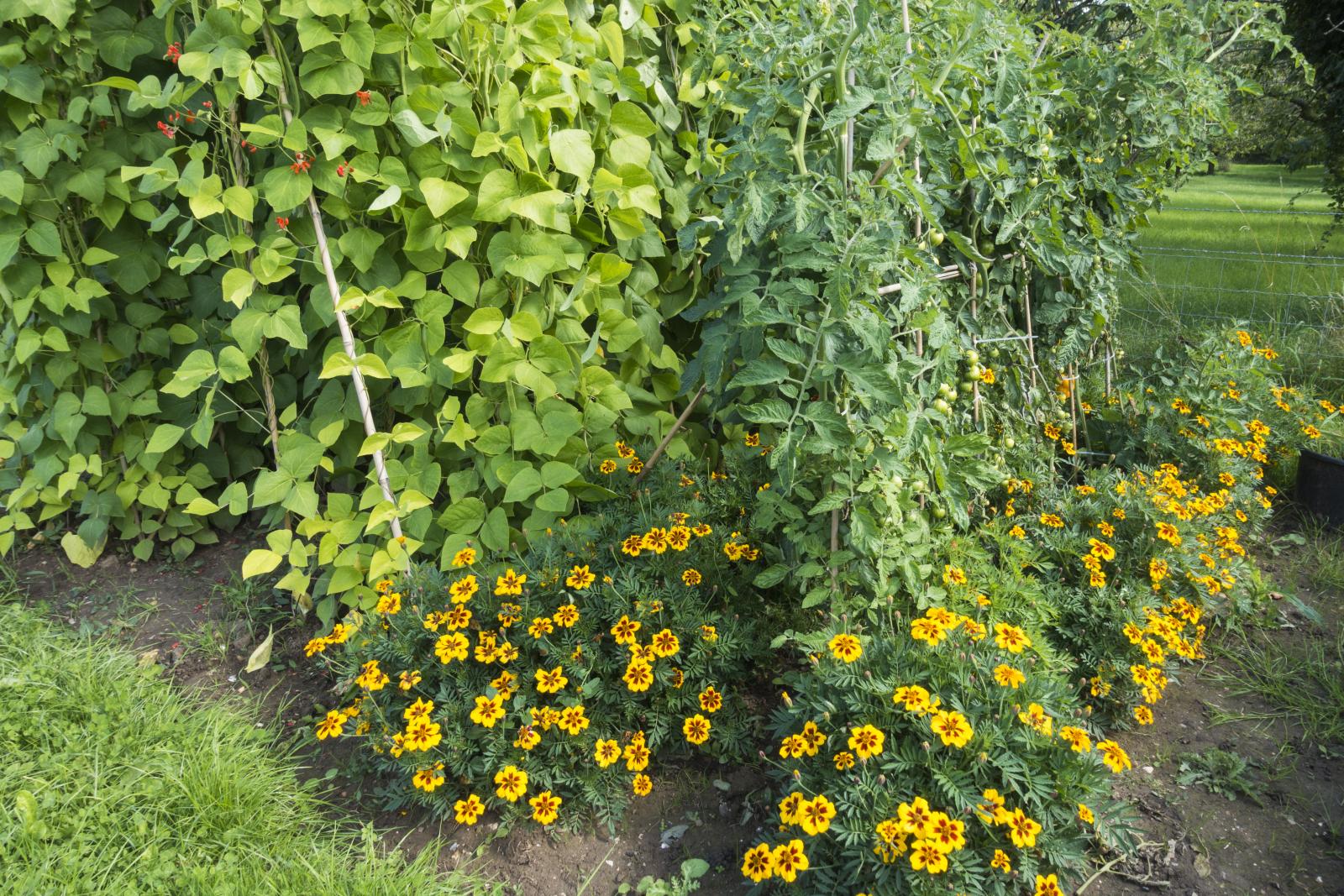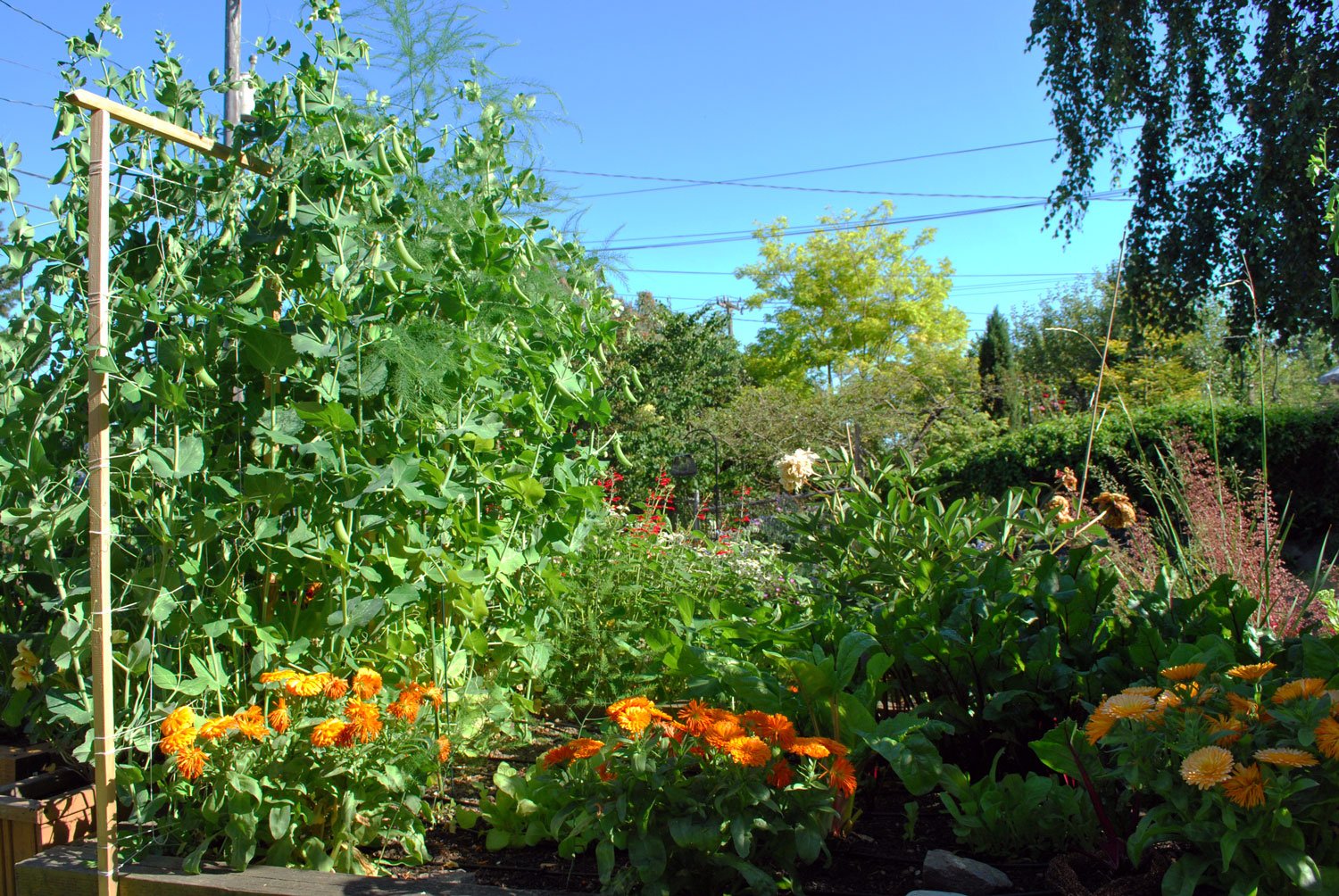The Ultimate Guide To Calendula Companion Planting
The Ultimate Guide to Calendula Companion Planting
Calendula, also known as pot marigold, is a beautiful and versatile flower that has many benefits for the garden. It is easy to grow, attracts pollinators, and can help to repel pests. Calendula is also a valuable companion plant, meaning that it can be planted alongside other vegetables and flowers to improve their growth and health.
In this guide, we will discuss the benefits of companion planting with calendula, as well as some of the best plants to grow alongside it. We will also provide tips on how to plant and care for calendula, so that you can enjoy its many benefits in your own garden.
Benefits of Companion Planting with Calendula
There are many benefits to companion planting with calendula. Some of the most important benefits include:
- Attracts pollinators: Calendula is a magnet for pollinators such as bees, butterflies, and ladybugs. These beneficial insects help to pollinate plants, which can lead to increased yields.
- Repels pests: Calendula has a strong scent that can help to repel pests such as aphids, nematodes, and tomato hornworms. This can help to keep your plants healthy and free from pests.
- Improves soil health: Calendula is a good source of nitrogen, which can help to improve soil health. This can lead to better growth and development of your plants.
- Discourages diseases: Calendula has been shown to help to discourage the spread of diseases such as powdery mildew and black spot. This can help to keep your plants healthy and productive.
Best Plants to Grow with Calendula
There are many different plants that can be grown alongside calendula. Some of the best plants to grow with calendula include:
- Asparagus: Calendula can help to repel asparagus beetles, which can be a problem for asparagus plants.
- Beans: Calendula can help to attract beneficial insects that prey on aphids, which can be a problem for beans.
- Broccoli: Calendula can help to improve the flavor of broccoli.
- Carrots: Calendula can help to repel carrot flies, which can be a problem for carrots.
- Cucumbers: Calendula can help to attract pollinators that pollinate cucumbers.
- Peas: Calendula can help to improve the yield of peas.
- Potatoes: Calendula can help to repel potato beetles, which can be a problem for potatoes.
- Tomatoes: Calendula can help to repel tomato hornworms, which can be a problem for tomatoes.
How to Plant and Care for Calendula
Calendula is a relatively easy plant to grow. It prefers full sun but can tolerate some shade. It is also a fairly hardy plant and can tolerate a variety of soil conditions. However, it does best in well-drained soil.
To plant calendula, sow the seeds directly in the garden in the spring or fall. The seeds should be planted about 1/2 inch deep and 1-2 inches apart. Calendula will bloom about 6-8 weeks after planting.
Calendula is a low-maintenance plant and requires little care. However, it is important to water it regularly, especially during hot, dry weather. You may also want to fertilize it once or twice during the growing season.
Conclusion
Calendula is a beautiful and versatile flower that has many benefits for the garden. It is easy to grow, attracts pollinators, and can help to repel pests. Calendula is also a valuable companion plant, meaning that it can be planted alongside other vegetables and flowers to improve their growth and health.
If you are looking for a way to improve your garden, consider adding calendula to your planting plan. Calendula is a great way to attract pollinators, repel pests, and improve soil health. With its bright, cheerful flowers, calendula will also add a touch of beauty to your garden.
Calendula is a beautiful and versatile flower that can be grown in a variety of gardens. It is also a great companion plant, meaning that it can be planted near other plants to benefit both of them.
Some of the best companion plants for calendula include:
- Asparagus: Calendula helps to repel asparagus beetles, which can be a major pest for asparagus plants.
- Beans: Calendula attracts beneficial insects that help to control aphids, which can be a problem for beans.
- Carrots: Calendula helps to deter carrot fly, which is a common pest for carrots.
- Cucumbers: Calendula attracts pollinators, which helps to increase the pollination of cucumbers.
- Potatoes: Calendula helps to repel nematodes, which can be a problem for potatoes.
If you are looking for more information about calendula companion plants, I recommend visiting Garden Wiki. This website has a comprehensive list of companion plants for calendula, as well as information on the benefits of companion planting.
FAQ of calendula companion plants
1. What are the benefits of companion planting with calendula?
Calendula is a great companion plant for many other vegetables and flowers. It has a number of beneficial effects, including:
- Attracting beneficial insects: Calendula attracts beneficial insects such as ladybugs, hoverflies, and lacewings. These insects help to control pests such as aphids, whiteflies, and spider mites.
- Repelling pests: Calendula also helps to repel pests such as cabbage moths, asparagus beetles, and carrot rust flies.
- Improving soil health: Calendula is a nitrogen-fixing plant, which means that it can help to improve the nitrogen content of the soil. This can benefit other plants in the garden.
- Distracting pests: Calendula's bright colors can distract pests from other plants in the garden.
- Adding beauty: Calendula is a beautiful flower that can add color and interest to any garden.
2. What are some good companion plants for calendula?
Some good companion plants for calendula include:
- Asparagus: Calendula helps to deter asparagus beetles.
- Beans: Calendula helps to attract aphids away from beans.
- Broccoli: Calendula helps to repel cabbage moths.
- Brussel sprouts: Calendula helps to repel cabbage moths.
- Carrots: Calendula helps to repel carrot rust flies.
- Cucumbers: Calendula helps to attract pollinators.
- Potatoes: Calendula helps to repel potato beetles.
- Pumpkins: Calendula helps to attract pollinators.
- Tomatoes: Calendula helps to attract pollinators and repel whiteflies.
3. What are some bad companion plants for calendula?
There are no known bad companion plants for calendula. However, it is best to avoid planting calendula near plants that are susceptible to the same pests, such as cabbage and cauliflower.
4. How far apart should calendula plants be planted?
Calendula plants should be planted about 12 inches apart. This will give them enough space to grow and spread.
5. How do I care for calendula companion plants?
Calendula companion plants are relatively easy to care for. They need full sun and well-drained soil. Water them regularly, especially during hot weather. They may need to be deadheaded to encourage more blooms.
Image of calendula companion plants
- Calendula and tomatoes: Calendula is a good companion plant for tomatoes because it helps to deter pests, such as aphids and whiteflies. It also attracts pollinators, which can help to improve the pollination of tomatoes.

- Calendula and cucumbers: Calendula is also a good companion plant for cucumbers because it helps to repel cucumber beetles. It also helps to improve the flavor of cucumbers.

- Calendula and carrots: Calendula helps to repel carrot flies, which can damage carrots. It also helps to improve the flavor of carrots.

- Calendula and asparagus: Calendula helps to repel asparagus beetles, which can damage asparagus. It also helps to improve the flavor of asparagus.

- Calendula and beans: Calendula helps to attract pollinators, which can help to improve the pollination of beans. It also helps to repel bean beetles.

Post a Comment for "The Ultimate Guide To Calendula Companion Planting"